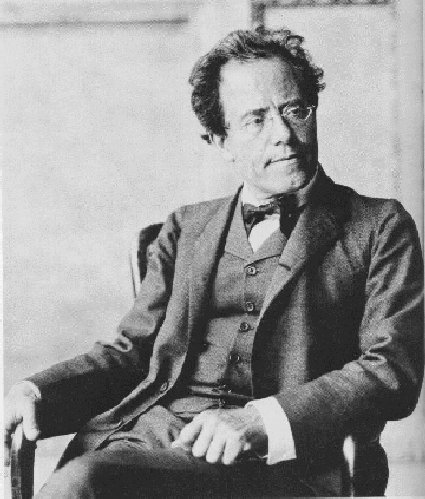

Mahler, Gustav (1860-1911), Austrian composer and conductor,
whose works mark the culmination of postromantic development of the symphony and
were a major influence on such 20th-century composers as the Austrians Arnold
Schoenberg and Alban Berg. Mahler was born July 7, 1860, in Kalischt (modern
Kalištč), in what is now the Czech Republic. He studied at the Vienna
Conservatory and in 1880 became assistant conductor at Bad Hall, Austria. He
subsequently held posts as a conductor of opera in several central European
cities. In 1897 he became artistic director of the Imperial Opera in Vienna.
Through his efforts Vienna attained world prestige as an operatic center in the
ensuing decade. In 1907 Mahler went to New York City, where he conducted at the
Metropolitan Opera from 1908 to 1910 and with the New York Philharmonic in
1910-11. He died in Vienna on May 18, 1911.
Of Mahler's symphonies, the unnumbered Das Lied von der Erde (Song of the Earth,
1908) and four of the nine numbered symphonies include solo voices with or
without chorus. The song cycles Kindertotenlieder (Songs on the Deaths of
Children, 1902) and Des Knaben Wunderhorn (The Boy's Magic Horn, 1888) exist in
alternate versions with piano or orchestral accompaniment; Lieder eines
fahrenden Gesellen (Songs of a Wayfarer, 1883) is orchestrally accompanied.
Mahler also composed songs for voice and piano and left an unfinished tenth
symphony. In his symphonies, he was the heir of the German composer Ludwig van
Beethoven and Richard Wagner and the postromantic Austrian composer Anton
Bruckner. Mahler's use of choral and solo vocal music in the symphony completes
the implications of Beethoven's similar procedure in his Ninth Symphony and also
achieves a musical and dramatic union akin to that sought by Wagner in his music
dramas.
Using the freedom that allowed Wagner and Bruckner to push almost to the limits
of the traditional system of keys and chords, Mahler remained within that
system, but he altered its basic premise so that most of his symphonies end in a
key different from the initial key. As did Wagner and Bruckner, he employed vast
orchestral resources; but his orchestration anticipated the 20th century in its
emphasis on the color of individual instruments and small combinations of
instruments, and its inclusion of unusual instruments such as the mandolin and
harmonium. Likewise, he foreshadowed the 20th-century concern with counterpoint.
Art | Biodata | Music | Recipes | Links | Stories | Poetry | Awards | Photos | Games |